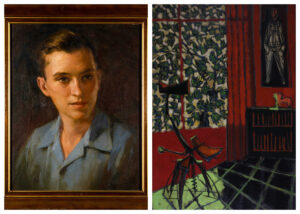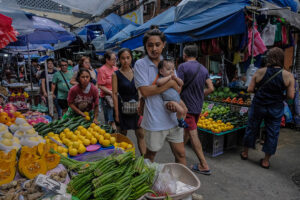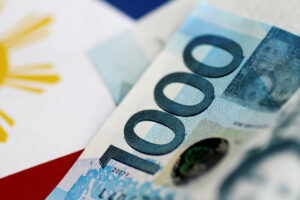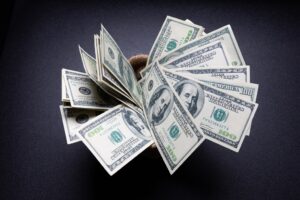FERNANDO ZÓBEL was both an influential artist and a staunch proponent of the Philippine postwar art scene. At the Ayala Museum and the Ateneo Art Gallery, these two sides of him are explored through exhibitions showcasing his life’s work.
Titled Zóbel: The Future of the Past, Spanish co-curators Felipe Pereda and Manuel Fontán del Junco’s follow-up to the highly acclaimed 2022 Zóbel exhibit at Museo Nacional del Prado in Madrid, is an expanded iteration, featuring over 200 of his works from the 1940s onwards.
Meanwhile, A Synergy of Ventures: The Postwar Art Scene is the Ateneo Art Gallery’s (AAG) vast showcase of the art that Mr. Zóbel donated to the school where he taught until the 1960s, a pivotal period in the development of Philippine modern art, and one that he fervently supported.
These two exhibitions, while organized and curated independently of each other, present two sides of a coin — Zóbel as an artist, and Zóbel as a patron of the arts — a fitting tribute for his birth centennial.
ZÓBEL AS AN ARTISTMr. Pereda, who is also a professor of Spanish art at Harvard University, told BusinessWorld that Mr. Zóbel was “a key figure in the search of the Filipino in the modern time of painting.”
“His works were fundamental in the grounding of the language of Filipino modern art,” he said during the exhibition’s launch in September.
They decided to showcase “Zóbel’s ability to bridge artistic traditions across Asia, Europe, and America,” since he was based in Manila, Madrid, and even Boston at various points of his life, according to Mr. Pereda.
For Mr. Fontán del Junco, a museum director at Fundación Juan March in Madrid, curating the show was a joy because it allowed them to “bring out Zóbel’s distinct voice as a lyrical abstractionist and expressionist.”
Opening the exhibition is a photograph of Mr. Zóbel at work, the piece he is working on, Self-Portrait on the Red Wall from 1954, displayed later on in the exhibit among his other vibrant early works. The painting comes from the private collection of Paulino and Hetty Que.
Sketchbooks exploring Chinese calligraphy, Japanese sumi-e painting, and Spanish colonial religious architecture as well as journals filled with depictions of day-to-day Philippine life reveal a complex myriad of influences.
Aside from the well-known Saetas and Serie Negra series, a must-see — being shown for the first time in public — is El Cristo de Lepanto, Mr. Zóbel’s 1964 painted dialogue with Juan Luna’s 1884 masterpiece Battle of Lepanto. The gigantic work concentrates Luna’s dramatic scenery of naval war into a stunning blur of light and colorful brushstrokes.
“That prized painting changes the narrative of this show, putting more emphasis on the Asian component. The Prado exhibit did not have it because it was [held] during the pandemic, so many loans were not possible. The Lepanto was the most ambitious work of that decade,” Mr. Pereda said.
ZÓBEL AS A PATRON OF THE ARTSThe exhibition at the Ateneo Art Gallery presents the core collection that Mr. Zóbel donated to the university between 1959 to 1969, along with loaned works from Purita Kalaw Ledesma’s estate. These are placed “within the context and conditions of the postwar era and its emerging art movement.”
“Zóbel was a latecomer to the Philippine arts scene coming from his studies in the US, but he was still very important. That’s why we included some of the Kalaw-Ledesma collection to represent the years before Zóbel’s first donation in 1952,” said Boots Herrera, AAG’s director and chief curator, at a media tour of the exhibit in September.
In addition to teaching art at Ateneo and setting up its gallery, Mr. Zóbel was a member of the Philippine Art Gallery (PAG) and the Art Association of the Philippines (AAP), organizations that solidified modern art in the country.
The exhibition showcases the works he preserved by Filipino contemporaries he admired who are now legends in Philippine art: Vicente Manansala, Anita Magsaysay-Ho, H.R. Ocampo, Jose Joya, Romeo Tabuena, Lee Aguinaldo, and Victor Oteyza.
“We wanted to show how modernism was reintroduced and reinvigorated through the postwar efforts of PAG and AAP,” Ms. Herrera said.
Walking through the exhibit is an awe-inspiring, in-depth crash course on Philippine modernism, as seen through the eyes and lens of Mr. Zóbel and his peers and students from the Ateneo community of artists and writers.
It is a glimpse into “the beginnings of artists who are now considered stalwarts in Philippine art history” and is an essential part of understanding Mr. Zóbel and his role in the development of Philippine art, she added.
Zóbel: The Future of the Past and A Synergy of Ventures: The Postwar Art Scene are both supported by the Embassy of Spain in the Philippines. The former runs at the Ayala Museum until Jan. 26, 2025, while the latter runs at Ateneo Art Gallery until July 12, 2025. — Brontë H. Lacsamana






